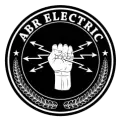For electricians and DIY enthusiasts, the use of Romex® within conduit is a topic of considerable debate, often scrutinized under the lens of building codes and safety standards. Here’s a detailed look at the factors surrounding this practice:
Understanding Romex® Wire
Romex® wire, designed for quick and safe installation in dry locations, is widely used in residential settings for exposed or concealed wiring. Products like the Southwire Romex SIMpull 250-ft 12/2 and the Southwire 15 ft. 14/2 Solid Romex SIMpull CU NM-B W/G Wire are popular choices. These wires are flame-retardant, crush-resistant, and suitable for outlets, switches, and other loads within branch circuits.
The Debate Around Romex® in Conduit
Whether Romex® can or should be run in conduit depends on several factors:
Heat Dissipation
Romex®, encased in a non-metallic sheath, is designed to dissipate heat into the surrounding air. When enclosed in conduit, especially over long distances, its ability to cool effectively is diminished, potentially leading to overheating and fire risks.
Building Codes
The National Electrical Code (NEC) offers guidelines on electrical wiring and materials. While not explicitly prohibiting NM cable (like Romex®) within conduit for certain applications, the NEC advises on conditions to avoid hazards. Always consult the latest NEC edition or a local building inspector for applicable regulations.
Practicality and Cost
Using Romex® in conduit may not be practical or cost-effective compared to other wire types better suited for conduit use, such as THHN or XHHW. These alternatives are easier to pull through conduit and offer better heat dissipation.
Conclusion
While Romex® is a convenient option for many residential wiring projects, running it inside conduit should be approached with caution to ensure safety and compliance with local building codes. In scenarios where conduit is necessary, opting for appropriate wiring methods that align with regulatory standards and best practices is crucial. Consulting with a professional electrician or local building authority is recommended to ensure safe and code-compliant electrical installations.
